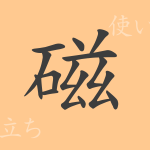The word “餌(えさ)” is often heard in daily life. While it is most commonly used to refer to food given to attract animals, its usage extends far beyond that. This time, we will delve into the common kanji “餌(えさ),” exploring its etymology, meaning, usage, and even the idioms and expressions it is part of. Let’s step into the world of “餌(えさ)” and appreciate the depth of the Japanese language.
Origins of 餌 (Etymology)
The kanji “餌(えさ)” is composed of the radical “食(しょく)” meaning food, and “耳(みみ)” representing the sound of a bird’s call. This combination originally referred to food given to birds, thus “bird feed.” Over time, its application has expanded, and it is now used to refer to food for various animals and even in metaphorical contexts.
Meanings and Usage of 餌
Besides its primary meaning of food given to animals, “餌(えさ)” also denotes means of attracting or tempting something. Examples include “釣り餌(つりえさ)” for fishing bait and “餌付け(えづけ)” for taming animals by feeding them. Metaphorically, it can refer to anything that attracts or entices people.
Readings, Stroke Count, and Radical of 餌
The kanji “餌(えさ)” is widely recognized and used in Japanese.
- Readings: The on’yomi (音読み(おんよみ)) is “ジ,” and the kun’yomi (訓読み(くんよみ)) is “えさ” or “え.”
- Stroke count: It has a total of 14 strokes.
- Radical: The radical is “食(しょくへん),” associated with food.
Idioms, Phrases, and Proverbs Using 餌
There are several idioms, phrases, and proverbs featuring “餌(えさ)” in Japanese.
- “餌食(えじき)”: Refers to prey that is eaten; metaphorically, it means being victimized.
- “餌付け(えづけ)”: Means luring by giving food, also used for drawing interest by offering something.
- “餌を撒く(えをまく)”: Literally means scattering bait; metaphorically, it refers to spreading information or gifts to attract interest from many people.
Conclusion on 餌
The word “餌(えさ)” is used in a variety of expressions in Japanese, extending beyond its literal meaning to include metaphorical uses that draw interest or allure. Examining this single kanji reveals the richness of the Japanese language. Let’s continue to explore the diverse aspects of “餌(えさ)” and deepen our understanding of its usage.

























